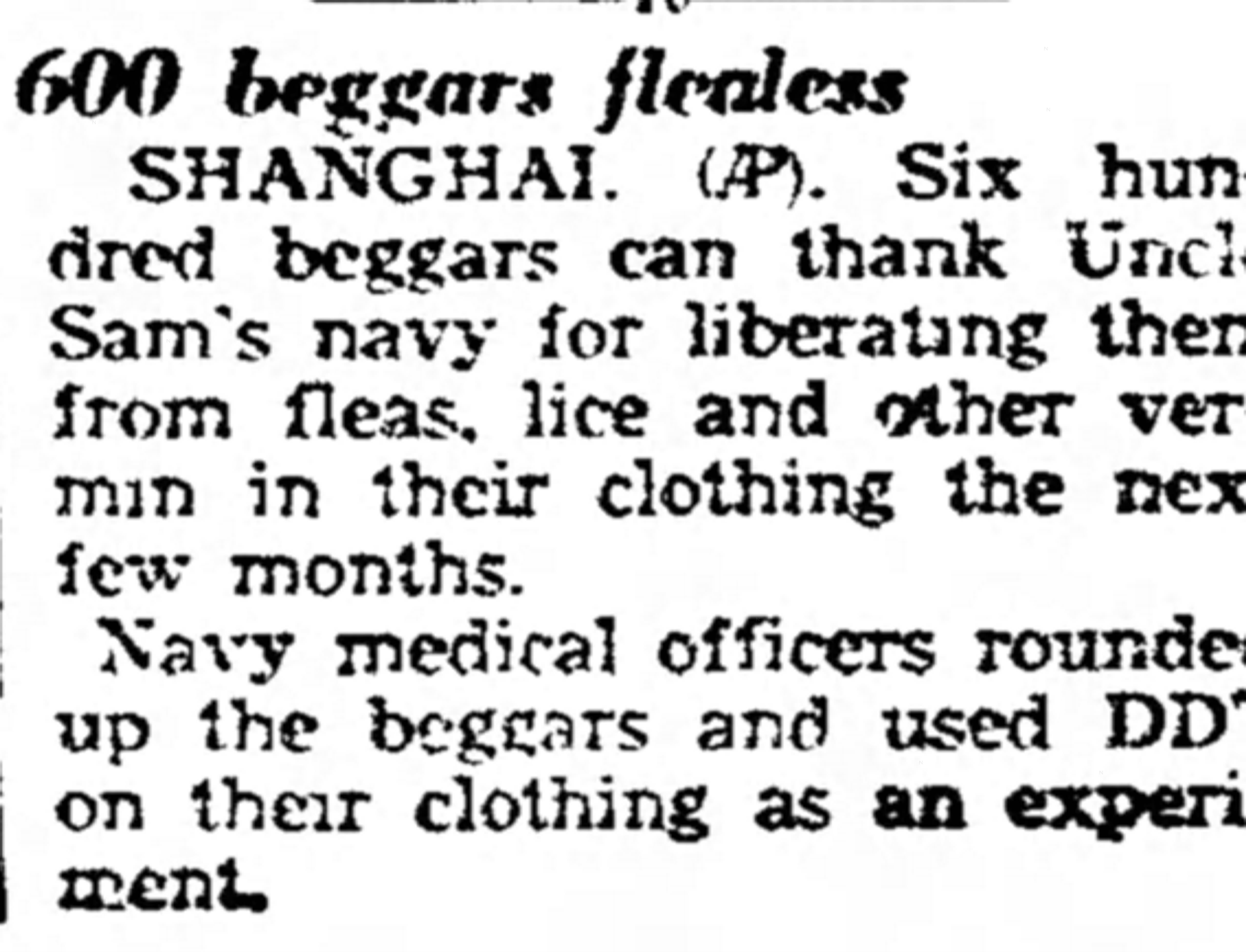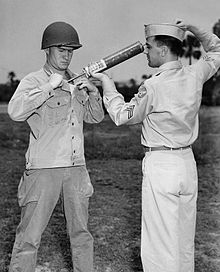Spraying Shanghai’s Beggars with DDT in 1945
Posted: February 17th, 2016 | No Comments »Given China’s annoyance at the possible renaming of the Chinese Embassy’s address in Washington to 1 Lu Xiaobo Plaza perhaps they could bring up this old incident from 1945?
Shanghai was home to many American troops driving the Japanese out of the country at the end of WW2. Almost immediately relief efforts started by the US under the auspices of UNRRA. Medical aid to get the place cleaned up after the Japanese occupation was a priority. And so, it seems, US Navy medical personnel, concerned at the infestations of fleas and lice on Shanghai’s considerable beggar population, got to work spraying them all to kill the vermin. According to this story from the Nebraska State Journal in December 1945 they rounded them up, sprayed their clothing with DDT as “an experiment”.
Nowadays DDT – dichlorodiphenyltrichloroethane – has a bad reputation but back then things were different. Invented in the 1870s DDT’s insecticidal actions were discovered in 1939 and used extensively by the US Military and others during the war to control malaria and typhus among the troops. After the war it became a staple insecticide in agriculture. Since the 1960s we’ve been aware of its possible negative effects, links to cancer and adverse effect on wildlife populations. The US imposed bans in the 1970s as did many other places but it’s still in use (not least in China which has limited it but not completely banned it) as its role in countering malaria is a trade off with its harmful health problems.
Who’s knows what effect it had on the 600 beggars who presumably had to put their sprayed clothing back on next to their skin. Probably killed the vermin, but what else…?

 A U.S. soldier demonstrates DDT hand-spraying equipment used to control the spread of typhus-carrying lice.
A U.S. soldier demonstrates DDT hand-spraying equipment used to control the spread of typhus-carrying lice.
Leave a Reply